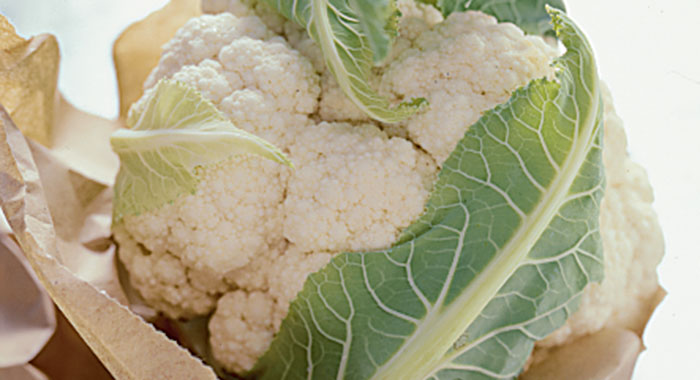
Pronounce it: coll-ee-fl-ow-ah
A brassica, like cabbage and broccoli, cauliflower is a mass of tiny, tightly packed flower heads (called curds), which grow from a thick central stem to form a single, round head, cupped by green leaves. It has a firm, almost waxy texture, and a mild, delicate flavour. Most cauliflowers are white, but it’s also possible to find green and purple varieties, as well as the sweeter Romanesco cauliflower, with its distinctive pointed florets. Like all brassicas, cauliflower smells very unpleasant if overcooked, so brief cooking is essential.
Availability
All year round, but at its best from mid December through to mid April.
Choose the best
Go for cauliflowers with pure white heads with no discolouration, and crisp green leaves. The colour of the base is a good indication of how recently it’s been picked – the whiter, the fresher.
Prepare it
Cut off the surrounding leaves (if they’re fresh, they can be cooked, too). For large cauliflowers, cut off individual florets from the central stem and cut again if necessary. You should end up with florets of a comparable size, so that they all cook at the same pace. Then wash. Smaller, baby cauliflowers can be cooked whole.
Store it
In perforated bag in a cool dark place, or the fridge. It will keep for several days.
Cook it
The florets are great used raw in a salad or as part of a crudité selection served with dips. Cooked cauliflower florets keep their shape best when steamed (5-10 minutes) – remember to place them upright in the steamer. It can also be boiled (takes 5-10 minutes for florets; around 10 minutes for a whole cauliflower). For both cooking methods, test regularly with the tip of a knife to make sure they don’t overcook.
You can also use cauliflower to make a rice substitute.
Alternatives
Try broccoli.
Be the first to comment on "Cauliflower"